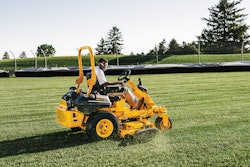
As the outdoor living industry continues to see record growth, in conjunction with record labor shortages and supply chain challenges, it’s essential to take a step back and evaluate what efficiencies may be lacking and where there is room for opportunity in your business.
One popular trend the industry is experiencing is the shift from individualized work to larger cohesive projects as firms expand their services to provide end-to-end solutions for their clients. Those thinking strategically have taken advantage of this growing market and capitalized where they could. We’ve seen this with expanding to maintenance work like landscaping or lawn care services or developing new skills such as specialized pool or fence installation.
Homeowners have continued requesting larger, higher budget projects encompassing all components of the backyard. To stay ahead of the industry, it’s critical to consider your limitations and where it could make sense to expand your offerings so you can boost profits and further build your expertise. For example, homeowners are more inclined to hire a contractor who can design and execute both their outdoor kitchen and pool projects for simplicity and efficiency rather than hiring separate contractors. Similarly, homeowners see the benefit in hiring a contractor with the technology to complete their project in half the time—even if they have to pay a premium.
With concerns of a soft economy and high demand, now is an especially good time to explore how expanding services could impact your business.
Consider Becoming a Full Design-Build Firm
The benefits of design-build projects are centered around a collaborative, unified team environment. Implementing an efficient workflow, decreasing potential risk and animosity and funneling all problems/solutions through one source eliminates pain points for designers, contractors and clients across the board.
Transitioning into this cohesive work environment takes patience along with dedicated training and investment in new tools, resources and staff. While this may seem taxing, the success that comes with implementing this strategy can be well worth the investment when executed properly.
If you’re considering taking a step to becoming a full design-build contractor but not yet ready to take the leap, finding a good partner and establishing a consistent relationship is a good place to start. Whether it’s a lighting specialist or vendor for accessories, forming these trusted partnerships multiplies your capabilities, which in turn increases overall revenue.
Leaning on these teams during the busy season can exponentially increase your productivity and allow more time for additional projects. However, building more efficient teams also requires improving technology and equipment to keep up the pace.
Integrate Technology & Efficiencies
In a world of instant gratification and growing expectations, the speed of installation has become a primary concern for clients. With new equipment, crews can get work done in days rather than weeks, which is invaluable to a client—as well as your business. Not only will clients perceive a greater value with such specialized equipment, but they will also likely pay more for that efficiency. As part of this, however, contractors may have to rethink how they bid on certain projects, as completion may be faster than if it had been done manually. However, this can even out, as you will be able to take on more projects and clients if you can minimize the time at each jobsite.
It's no secret that hardscape installers want updated tools and equipment, but it requires specialized training that quickly becomes overwhelming to schedule as calendars are booked out for months. However, with the increase in popularity of larger projects that require complex installations of materials of all shapes and styles, the investment in training to gain the efficiencies is well worth the spend.
Not only does expanding services and technology improve business operations and increase profits, but it also is key to recruiting and retaining employees. As an industry with a traditionally manual history, it’s essential to adapt to new ways of working and implement new technology to attract younger generations, while also keeping older generations of workers healthy and able to work as long as they like.
















![Doosan Bobcat Wacker Neuson Stack 2ec Js Pb V6e[1]](https://img.greenindustrypros.com/mindful/acbm/workspaces/default/uploads/2025/12/doosan-bobcat-wacker-neuson-stack2ecjspbv6e1.CPyyz8ubHn.png?ar=16%3A9&auto=format%2Ccompress&bg=fff&fill-color=fff&fit=fill&h=135&q=70&w=240)



